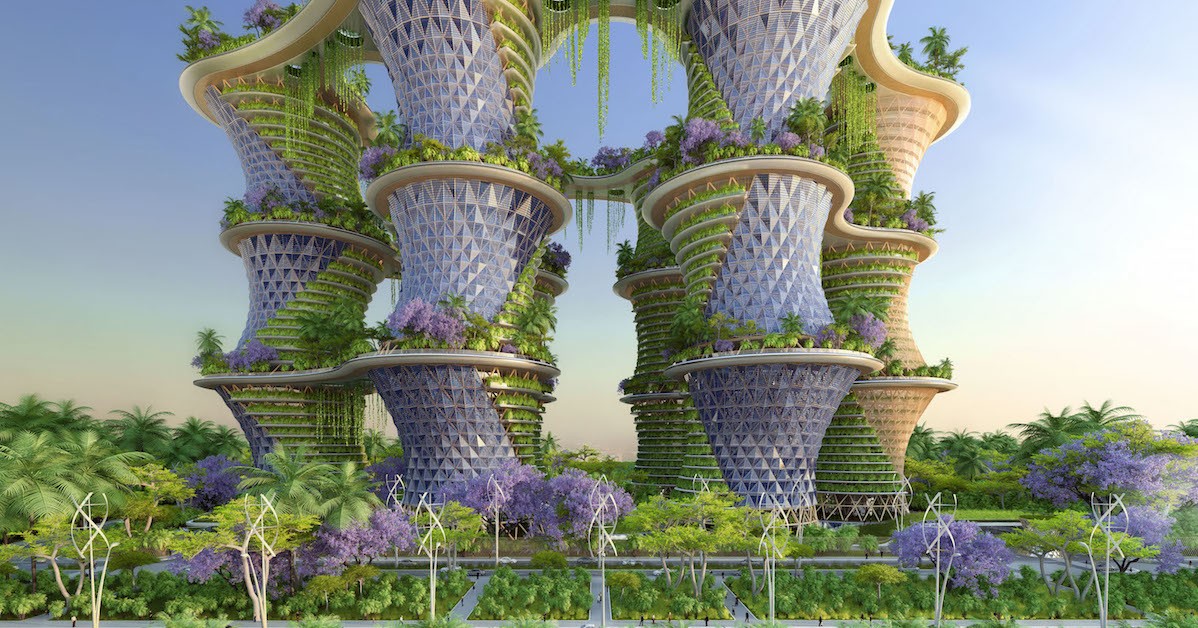Vertical farming is an innovative and sustainable farming technique that is gaining popularity worldwide. It is a system of growing crops in vertically stacked layers, using hydroponics or aeroponics to provide water, nutrients, and light. This technology offers numerous benefits, including reduced land use, water conservation, reduced carbon footprint, and increased crop yields. As the world's population continues to grow, and available land for farming becomes increasingly scarce, vertical farming is seen as the future of agriculture.
 |
| vertical Farming |
Vertical farming provides a solution to many of the challenges facing traditional agriculture. For one, it reduces the amount of land required to grow crops. Vertical farming systems use a fraction of the land required for traditional farming methods, making them ideal for urban environments where space is limited. This means that they can be set up in densely populated areas, reducing the need to transport food over long distances, which in turn reduces the carbon footprint of the food industry.
Vertical farming also offers water conservation benefits. The system uses up to 90% less water than traditional farming methods, which is a huge advantage in areas where water is scarce. In addition, the water used in vertical farming is recycled, which means that it can be used again and again, reducing the amount of water waste in the farming process.
Another significant advantage of vertical farming is its ability to produce crops year-round. This is because vertical farming systems control the light, temperature, and humidity required for optimal plant growth. As a result, vertical farms can produce crops in any season, making it possible to provide fresh produce all year round. This has the potential to revolutionize the food industry and provide people with fresh and nutritious food, regardless of the time of year.
 |
| vertical Farming |
Vertical farming also has the potential to increase crop yields. By controlling the environment in which the crops grow, vertical farming systems can optimize the growing conditions for each individual plant. This means that crops can be grown faster and more efficiently than in traditional farming methods. Additionally, vertical farming systems are less susceptible to pests and diseases, reducing the need for pesticides and herbicides.
One of the primary challenges of vertical farming is the cost of setting up and maintaining a vertical farm. However, as the technology continues to improve, the costs are likely to come down. In addition, vertical farming has the potential to provide a significant return on investment, as it can produce higher yields of crops per square foot than traditional farming methods. Furthermore, the reduced carbon footprint and water conservation benefits of vertical farming can result in cost savings in the long run.
Vertical farming also has some limitations. For example, it is not suitable for all types of crops. Some crops, such as large trees, cannot be grown in vertical farming systems. In addition, vertical farming systems require a significant amount of energy to operate, primarily for lighting and temperature control. However, the use of renewable energy sources, such as solar power, can help to mitigate this issue.
In conclusion, vertical farming is a promising solution to many of the challenges facing traditional agriculture. It has the potential to increase crop yields, reduce land use, conserve water, and provide fresh produce year-round. Although there are still some challenges to overcome, as the technology continues to improve, the benefits of vertical farming are likely to become increasingly apparent. It is clear that vertical farming is the future of agriculture, and it has the potential to revolutionize the way we grow and produce our food.
Keywords:


0 Comments